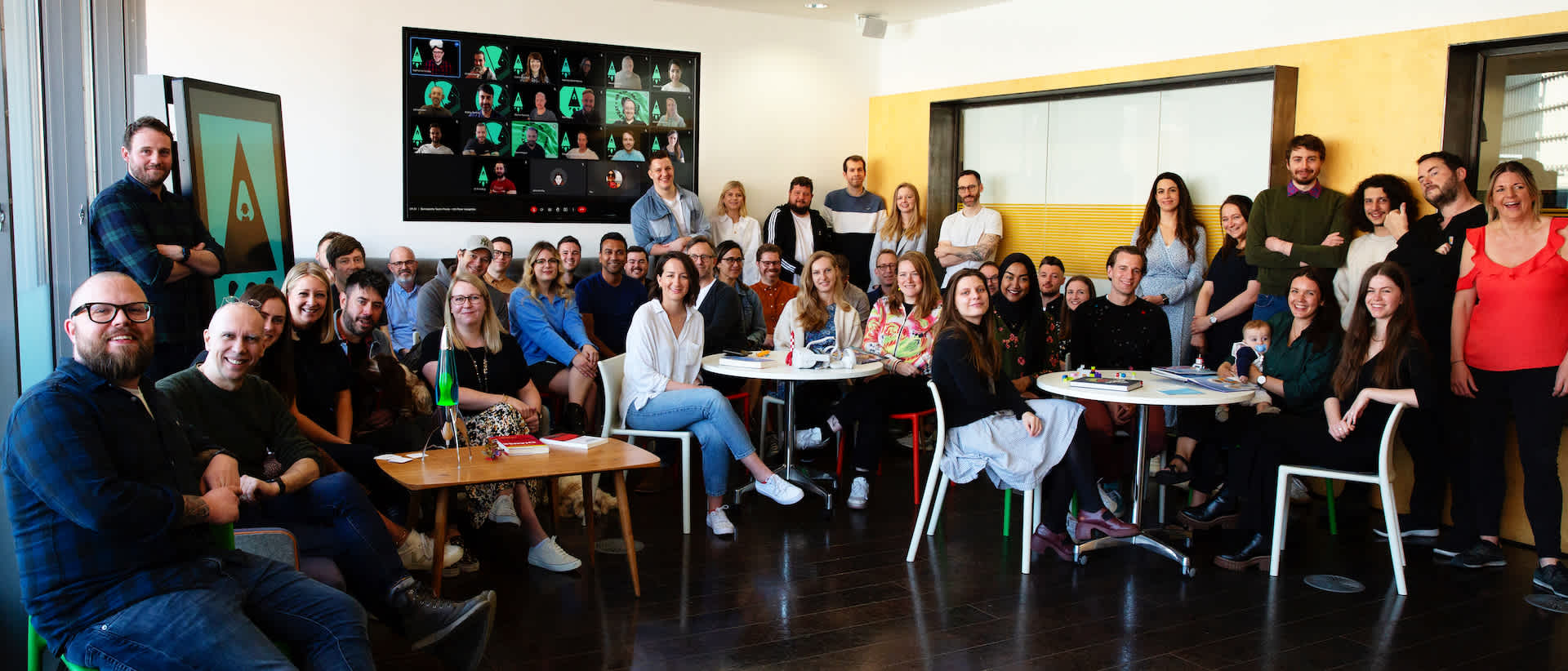Looking to crack the code for digital product success? Here’s how

As time spent online continues to climb and digital products and services become embedded in our lives, it’s getting harder for brands to breakthrough in digital.
With a staggering 80% of our time spent in around five apps and with rising evidence that many other apps are only used once, it's no surprise that so few digital services achieve mainstream status.
So, what is the formula for a successful digital launch and what trade-offs do brands need to make to deliver ‘must have’ services people really want to use?
Success and failure in equal measure have long characterised the digital industry - from the dotcom boom, explosion of mobile and the shift to online shopping, we’ve seen digital brands rise and fall - one moment capturing the imagination and attention of a generation, the next, gone.
This golden age has created some of the earth’s biggest companies, Amazon, Google and Alphabet revolutionised how we access the internet and shop, with Spotify and Netflix transforming music and entertainment beyond our wildest expectations.
These customer-obsessed brands are now critical to our everyday lives, dominating the time we spend online, earning our loyalty and continually growing share of our wallets.
Lots of launches, few breakthroughs
Whilst these megaliths reap the benefits, others barely get a look in.
Despite the continued flurry of launches, so few services resonate. Almost a quarter of apps are only used once and despite the growth of online shopping, 33% believe online customer service is declining and 6 out of 10 buyers now say, despite the rise of eCommerce, they prefer the experience of shopping in physical stores.
Is choice fatigue coupled with a lack of standout services stymying digital growth?

Designing your formula
So, what are the lessons to be learnt for brands looking to take new products or services to market and find their product-market fit?
We believe there are four universal considerations for product success in today’s marketplace regardless of category and audience.

Product teams need to put the solution to the back of their mind, and instead obsess about the problem space.
Ask yourself, what are the biggest, most frequent and (ideally) growing problems your business, uniquely, could be paid to solve for the consumer and which in principle could be commercialised?
In today’s copy-cat digital world with so many competing services and notifications flooding our screens, a myopic focus on the consumer problem, and the benefit your service can deliver, is paramount.
Secondly, develop a clear, single-minded hypothesis about your solution, considering at the simplest level, what it would take to solve the problem and what the first, simplest iteration of your service should look like.
Resist feature bloat - the temptation to pack too many features into your initial product - adopt a narrow focus initially on the core function and experience needed to address the problem and the cost, and the operational and delivery effort required to take this to market.
Adopt a venture mindset, focusing solely on the KPIS required to get a clear read, as quickly as possible, on user appetite for the service and user feedback, the two key signals you’ll need to keep iterating.


Great interface design is no longer enough, successful brands don't design simply for acquisition, they design for customer relationships.
Consider how you can recognise and reward repeat users, both through a progressively personalised service that improves over time and economically, offering better pricing or rewards for repeat purchase to improve retention and spend and help offset acquisition costs.
Additionally, build for network effect - as your service and base grow so should its value and utility to the user - for example a bigger, more valuable user community, an exclusive content offering, better access to the service in more locations and of course, improved pricing, leading to stronger retention as monetary and psychological switching costs rise.
Your product strategy should never be incremental - the speed of changing consumer expectations and the risk of disruption are too great.
Top performers are organised for change, and in most cases, invest as much experimenting with new services as they do in optimising performance across their current business models.
Ask yourself - how can you take your product to the next level by creating a more connected or convenient service? How could partners offer you speed to market for new experiments? And finally, how could a broader ecosystem of services allow you to extend beyond your core offering, grow your customer base and create new efficiencies?


Sounds simple, but so many brands get it wrong and sadly most startups still fail - either failing to sell or size the idea, struggling to prioritise what goes into the pilot, suffering defeat from internal tech or operational roadblocks or failing to learn and respond to the market effectively.
Putting your strategy into action
If you’ve got a bold, inventive idea that needs nurturing, we’d love to have a conversation. We can help you support your team in building the case and taking it into execution, providing the rigour and magic to get it across the line. Get in touch with us!
Jasper Bell, Head of Business Design - jbell@wearebernadette.co
Let's talk
Got a creative business challenge that’s looking for a breakthrough idea? Or, perhaps you’re interested in joining our collective of digital pioneers? Maybe you just want to know a little more about what we do. In any case, we’d love to hear from you.



